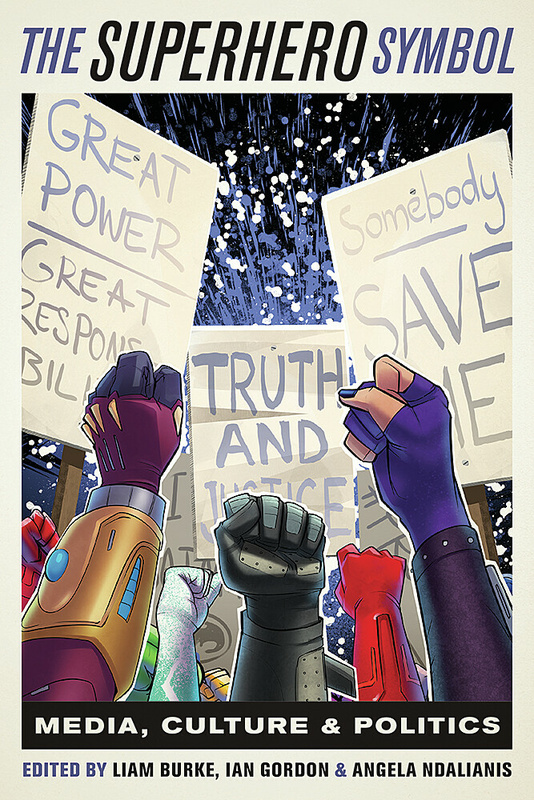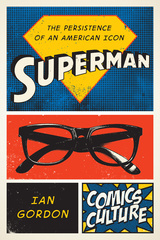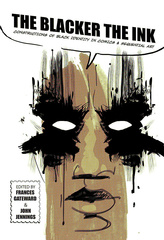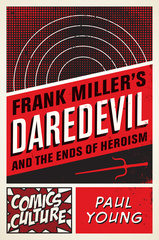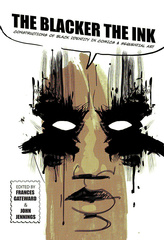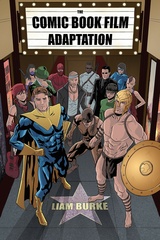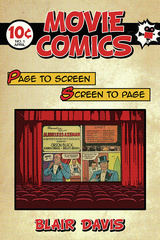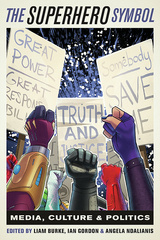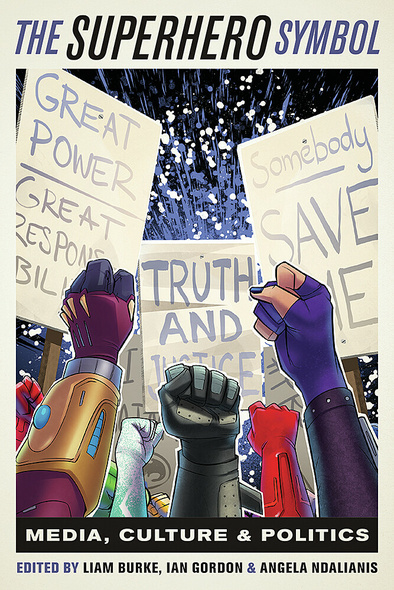
336 pages, 6 x 9
34 color images, 3 BW images, 1 table
Paperback
Release Date:13 Dec 2019
ISBN:9780813597164
The Superhero Symbol
Media, Culture, and Politics
Rutgers University Press
“As a man, I'm flesh and blood, I can be ignored, I can be destroyed; but as a symbol... as a symbol I can be incorruptible, I can be everlasting”. In the 2005 reboot of the Batman film franchise, Batman Begins, Bruce Wayne articulates how the figure of the superhero can serve as a transcendent icon.
It is hard to imagine a time when superheroes have been more pervasive in our culture. Today, superheroes are intellectual property jealously guarded by media conglomerates, icons co-opted by grassroots groups as a four-color rebuttal to social inequities, masks people wear to more confidently walk convention floors and city streets, and bulletproof banners that embody regional and national identities. From activism to cosplay, this collection unmasks the symbolic function of superheroes.
Bringing together superhero scholars from a range of disciplines, alongside key industry figures such as Harley Quinn co-creator Paul Dini, The Superhero Symbol provides fresh perspectives on how characters like Captain America, Iron Man, and Wonder Woman have engaged with media, culture, and politics, to become the “everlasting” symbols to which a young Bruce Wayne once aspired.
It is hard to imagine a time when superheroes have been more pervasive in our culture. Today, superheroes are intellectual property jealously guarded by media conglomerates, icons co-opted by grassroots groups as a four-color rebuttal to social inequities, masks people wear to more confidently walk convention floors and city streets, and bulletproof banners that embody regional and national identities. From activism to cosplay, this collection unmasks the symbolic function of superheroes.
Bringing together superhero scholars from a range of disciplines, alongside key industry figures such as Harley Quinn co-creator Paul Dini, The Superhero Symbol provides fresh perspectives on how characters like Captain America, Iron Man, and Wonder Woman have engaged with media, culture, and politics, to become the “everlasting” symbols to which a young Bruce Wayne once aspired.
With contributions by an imposing list of scholars, The Superhero Symbol offers readers enlightening essays on the politics of the superhero, on the commercial branding, nationalism and national identity, on sexuality and sexual identity, and on the culture and mythology of the superhero; in short, everything about the superhero that you never asked because it never even occurred to you to ask.
This extraordinary league of transmedial comics scholars pull off the impossible: the definitive tome on how global industries create and planetary consumers actively engage with the superhero symbol. The tack-sharp cross-disciplinary scholarship along with deep-probe interviews with industry titans take us on a wild journey through time and space to forcefully show how those costume-clad full-chested insignias and sky-beamed icons are much more than expressions of fan-boy wish fulfilment fantasies. Provocative. Field defining. A must read!
Throughout the essays cross-refer, giving the collection considerable unity. Combining fundamental concerns in superhero studies with a variety of thought-provoking special topics, and studded with color illustrations, this is a worthwhile collection for both knowledgeable scholars and newcomers to superhero studies. Recommended.
There is a lot of ground covered in this book, much of which will make you think beyond your normal perimeters and that’s never a bad thing and makes for an interesting book.
LIAM BURKE is the Cinema and Screen Studies Coordinator at Swinburne University of Technology in Melbourne, Australia, where he also teaches classes on comic books and cinema. He has written and edited a number of books including The Comic Book Film Adaptation (2015), Fan Phenomena Batman (2012), and Superhero Movies (2008).
IAN GORDON teaches cultural history and American Studies at the National University of Singapore, where he is the Head of the Department of History. His books include Superman: The Persistence of an American Icon (2017), Kid Comic Strips: A Genre Across Four Countries (2016), Comic Strips and Consumer Culture (1998), and the edited work Film and Comic Books (2007).
ANGELA NDALIANIS is Director of the Centre for Transformative Media Technologies at Swinburne University of Technology. The books she has written or edited include The Horror Sensorium: Media and the Senses (2012), Science Fiction Experiences (2010), The Contemporary Comic Book Superhero (2009), Super/Heroes: from Hercules to Superman (2007), and Neo-Baroque Aesthetics and Contemporary Entertainment (2004).
IAN GORDON teaches cultural history and American Studies at the National University of Singapore, where he is the Head of the Department of History. His books include Superman: The Persistence of an American Icon (2017), Kid Comic Strips: A Genre Across Four Countries (2016), Comic Strips and Consumer Culture (1998), and the edited work Film and Comic Books (2007).
ANGELA NDALIANIS is Director of the Centre for Transformative Media Technologies at Swinburne University of Technology. The books she has written or edited include The Horror Sensorium: Media and the Senses (2012), Science Fiction Experiences (2010), The Contemporary Comic Book Superhero (2009), Super/Heroes: from Hercules to Superman (2007), and Neo-Baroque Aesthetics and Contemporary Entertainment (2004).
Contents
Introduction: “Everlasting” Symbols: Unmasking superheroes and their shifting symbolic function, Liam Burke
Section 1: Superheroes, Politics, and Civic Engagement
1. “What Else Can You Do With Them?”: Superheroes and the Civic Imagination
Henry Jenkins
2. “America Is A Piece of Trash”: Captain America, Patriotism, Nationalism, and Fascism
Neal Curtis
3. “This Land is Mine!” Understanding the Function of Supervillains
Jason Bainbridge
Interview 1: Comics artist, writer, and "herstorian" Trina Robbins
Section 2: The Superhero as a Brand
4. The Secret Commercial Identity of Superheroes: Protecting the Superhero Symbol
Mitchell Adams
5. Siegel and Shuster as Brand Name
Ian Gordon
6. Practicing Superhuman Law: Creative License, Industrial Identity, and Spider-Man’s Homecoming
Tara Lomax
7. The sound of the cinematic superhero
Dan Golding
Interview 2: Former President of DC Entertainment Diane Nelson
Section 3: Becoming the Superhero
8. Arkham Knave: The Joker in Game Design
Steven Conway
9. Being Super, Becoming Heroes: Dialogic Superhero Narratives in Cosplay Collectives
Claire Langsford
10. “From Pages to Pavements”: A Criminological Comparison Between Depictions of Crime Control in Superhero Narratives and “Real-Life Superhero” Activity
Vladislav Iouchkov and John McGuire
Interview 3: Dark Night: A True Batman Story writer Paul Dini
Section 4: Superheroes and National Identity
11. Captain America, National Narratives, and the Queer Subversion of the Retcon
Naja Later
12. Apes, Angels, and Super Patriots: The Irish in Superhero Comics
Liam Burke
13. Missing in Action: The Late Development of the German-Speaking Superhero
Paul M. Malone
14. Chinese Milk for Iron Men: Superhero Coproductions and Technological Anxiety
Shan Mu Zhao
15. Age of the Atoman: Australian Superhero Comics and Cold War Modernity
Kevin Patrick
Interview 4: Cleverman creator Ryan Griffen and star Hunter Page-Lochard
Acknowledgements
Notes on the Editors
Notes on Contributors
Index
Introduction: “Everlasting” Symbols: Unmasking superheroes and their shifting symbolic function, Liam Burke
Section 1: Superheroes, Politics, and Civic Engagement
1. “What Else Can You Do With Them?”: Superheroes and the Civic Imagination
Henry Jenkins
2. “America Is A Piece of Trash”: Captain America, Patriotism, Nationalism, and Fascism
Neal Curtis
3. “This Land is Mine!” Understanding the Function of Supervillains
Jason Bainbridge
Interview 1: Comics artist, writer, and "herstorian" Trina Robbins
Section 2: The Superhero as a Brand
4. The Secret Commercial Identity of Superheroes: Protecting the Superhero Symbol
Mitchell Adams
5. Siegel and Shuster as Brand Name
Ian Gordon
6. Practicing Superhuman Law: Creative License, Industrial Identity, and Spider-Man’s Homecoming
Tara Lomax
7. The sound of the cinematic superhero
Dan Golding
Interview 2: Former President of DC Entertainment Diane Nelson
Section 3: Becoming the Superhero
8. Arkham Knave: The Joker in Game Design
Steven Conway
9. Being Super, Becoming Heroes: Dialogic Superhero Narratives in Cosplay Collectives
Claire Langsford
10. “From Pages to Pavements”: A Criminological Comparison Between Depictions of Crime Control in Superhero Narratives and “Real-Life Superhero” Activity
Vladislav Iouchkov and John McGuire
Interview 3: Dark Night: A True Batman Story writer Paul Dini
Section 4: Superheroes and National Identity
11. Captain America, National Narratives, and the Queer Subversion of the Retcon
Naja Later
12. Apes, Angels, and Super Patriots: The Irish in Superhero Comics
Liam Burke
13. Missing in Action: The Late Development of the German-Speaking Superhero
Paul M. Malone
14. Chinese Milk for Iron Men: Superhero Coproductions and Technological Anxiety
Shan Mu Zhao
15. Age of the Atoman: Australian Superhero Comics and Cold War Modernity
Kevin Patrick
Interview 4: Cleverman creator Ryan Griffen and star Hunter Page-Lochard
Acknowledgements
Notes on the Editors
Notes on Contributors
Index

